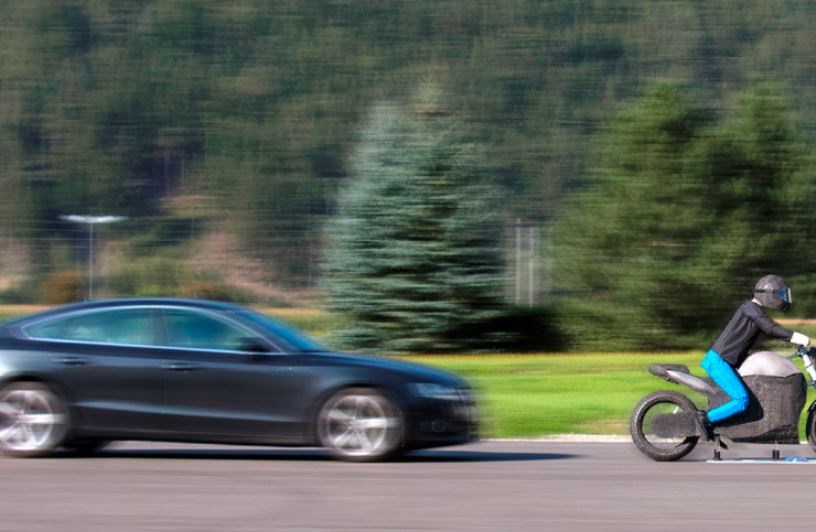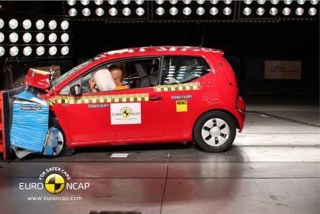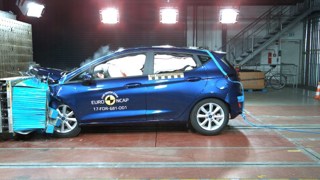Euro NCAP is preparing a host of new tests which aim to regulate the increasing number of autonomous driving aids and other technology being introduced to cars by manufacturers.
Prioritising vulnerable motorists such as pedestrians, cyclists and motor cyclists, the new tests will operate outside the current star rated system and will replicate potential hazards which autonomous systems will be called upon to mitigate.
Safety teas partner Thatcham is also preparing to monitor systems which can detect the presence of alcohol within a driver as part of the new strategy, dubbed “Road Map 2025”.
Peter Shaw, chief executive, Thatcham Research, said: “Euro NCAP’s ‘Road Map 2025’ is a significant message of intent, and marks a watershed in vehicle safety assessments and ratings.
“It is no longer about just protecting car occupants in an accident, but also assessing how capable a car can brake and steer automatically to avoid other vehicles, pedestrians, cyclists and motorcyclists. It lays the foundations for safety assessment of future autonomous vehicles.”
While actively preventing crashes in the first place, the ‘Road Map’ moves the safety agenda further on, by addressing accident scenarios like junctions where pedestrians, cyclists and motor cyclists are most likely to be killed or seriously injured in collisions with cars.
In the UK, 30% of all those killed or seriously injured (KSI) on the roads are vulnerable road users (VRUs).
Matthew Avery, Thatcham Research’s director of research, said that safety testers were particularly concerned about the marketing premise of semi-autonomous systems currently retailed by many manufacturers. He said: “We have concerns over the way car manufacturers name and market assisted and automated driving functionalities, with ‘auto’ or ‘pilot’ prefixes.
“People are looking for answers around how safe the new assisted and autonomous technologies are, and the Euro NCAP assessments and ratings will give clear information about how safely it operates, and what obligations the driver has around taking back control.”
Since its establishment in 1997, Euro NCAP’s independent crash tests and continuously evolving assessment protocols have given consumers the knowledge to make informed car purchasing decisions, saving an estimated 76,000 lives across the EU and 15,000 lives in the UK over the past 20 years as a result.
The Road Map 2025 will challenge vehicle manufacturers to offer the best possible technology as standard in all segments, protecting not only car occupants but also increasingly addressing the safety of other more vulnerable road users.
Michiel van Ratingen, Euro NCAP’s secretary general, said, “The potential safety benefits of automated driving are huge.
“If we can eliminate human error, we should see road casualty numbers tumbling and many lives being saved. But there is a lot of misunderstanding, over-expectation and perhaps some suspicion, of a world in which cars can drive themselves.
“Our role will be to provide clear information to consumers about the degree of automation in a car and how safely that automation has been implemented.
“Quite a challenge, but essential if Euro NCAP is to continue pressing for improvements from those who make cars and providing meaningful information to those who buy them.”
Euro NCAP’s Road Map outlines a timeline for the introduction of key protocol enhancements, for the first time addressing tertiary safety as part of a holistic approach combining primary and secondary safety features, including:
Primary Safety:
Driver Monitoring (2020), Automatic Emergency Steering (2020, 2022), Autonomous Emergency Braking (2020, 2022), Vehicle to Vehicle Data Exchange and Vehicle to Infrastructure (2024)
Secondary Safety:
Whiplash/Rear-end Crash Protection (2020), Pedestrian and Cyclist Safety (2022)
Tertiary Safety:
Rescue, Extrication and Safety (2020), Child Presence Detection (2022)



















Kev - 13/09/2017 13:11
I applaud the efforts of Thatcham in their endevours to improve safety at the cost to Manufacturers. It would be equally welcoming if the research centre felt some responsibility to safety of post repaired accident damaged vehicles and the quality of what is being allowed to be covered up by unregulated Repair shops and poor technician competence. It seems new cars and Manufacturers are an easier target?